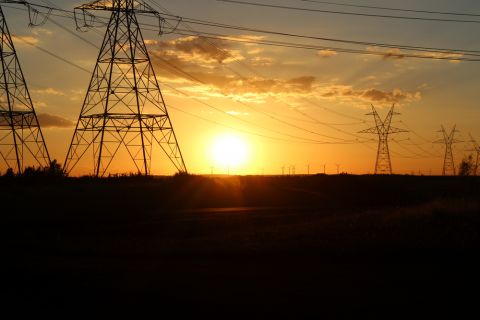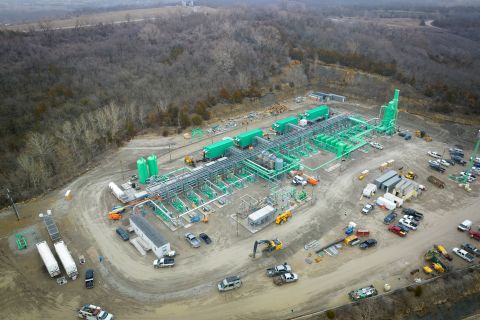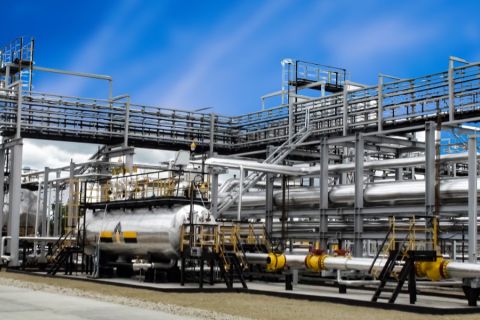One of the most commonly used terms in the oil and gas industry today is flow assurance, and a reduction in well intervention is one of the most accurate means of determining flow assurance’s success. With rigs priced at as much as US $1 million a day, the costs of shutting down production for well intervention can quickly add up, as can the risks. Subsea multiphase sampling can play a role in preempting well intervention.
The growing role of subsea multiphase meters
With test lines for subsea well testing costing as much as $60 million along with the accompanying logistical challenges, the last few years have seen subsea multiphase meters become a valuable alternative to well testing.
Multiphase meters have ushered in a new era for operators with smaller platforms and the ability to upgrade facilities to subsea tiebacks.

The SMSS collects samples under isobaric conditions via an ROV. (Images courtesy of Mirmorax)
Commingled pipelines and test separator measurements are a poor indicator of individual well production; multiphase meters are providing operators with much clearer data on their operations. Multiphase meters, however, can only operate to their full potential if precisely calibrated and sensitively aligned with the changing conditions of the reservoir and fluctuating flow rates.
With the cost of purchasing and integrating just one multiphase or wet gas meter being approximately $400,000, subsea multiphase sampling can have a significant impact on the economics of the field.
Effective subsea sampling delivers true volumetric sampling on oil, gas, and water in the well without interrupting production. Through subsea sampling, the operator can accurately capture fluid properties, calibrate multi-phase and wet gas meters, and ensure that the wells are performing at the peak of their production limits. An important source for evaluating fluid properties and predicting reservoir performance today is pressure-volume-temperature (PVT) data.
Importance of accurate PVT
By tracking composition changes, PVT data can play a key role in supporting production and fiscal allocation and providing input to EOR programs.
These fractional data on oil, gas, water, salinity, and PVT are crucial for calibrating multiphase meters. All multi-phase meters using a gamma source must be configured with the fluid properties of oil, water, and gas and must reflect the changing PVT data over time.
Conventional test separators have determined the changes in volumetric behavior of the reservoir fluid as it passes through the separator with samples and then is reconstituted to produce a representative live sample by recombining the fluids with separator gas to match the wellhead gas-oil ratio (GOR).
This process can lead to potential inaccuracies, particularly when using a separator on longer pipelines and where lower pressures decrease PVT accuracy. Using a test separator to run well tests one at a time can have a negative impact on field economics with production shutdown sometimes inevitable.
The dangers of inaccurate PVT analysis were highlighted as far back as 1997 in an SPE paper by Adel M. Elsharkawy of Kuwait University. In this study, inaccurate PVT analysis resulted in a significant underestimation of the solution GOR and oil formation volume factor and an overestimation of crude oil viscosity. The result was an underestimation of the ultimate oil recovery from the field in question by as much as 40%. Better representation of PVT data ensures better prediction of reservoir behavior and production optimization. This can only be achieved through true volumetric sampling.
Subsea multiphase sampling
Recent technology developments in subsea multiphase sampling systems are generating accurate samples through the meeting of a number of criteria.
First, the sample needs to be maintained at its original pressure conditon through extraction, delivery to the surface, and transportation to the laboratory facility. Maintaining this pressure condition and the true representation of the process is crucial in providing accurate PVT analyses and accurate samples.
This is opposed to traditional subsea sampling, which normally takes place topside with samples taken randomly without attention to the flow dynamics of the fluids being sampled and the original field pressure conditions. The result is an incomplete sample and a lack of accurate PVT data. There also is the danger of fluid contamination where samples are sometimes exposed to oil-based drillling or other reservoir production fluids.
Second, sampling needs to take place regularly, with sampling repeated multiple times on the same well to secure a number of samples over a certain time period. This is compared to traditional sampling, which is often based on a limited number of ad hoc samples retrieved either through wireline sampling or flow tests.
In addition, water conductivity may change significantly during the time between the sample being taken and results received by the laboratory, jeopardizing the validity of the test and having a major potential impact on well stimulation operations.
Subsea sampling needs to take place as close to the wellhead as possible. In the case of multiphase meters, it is only through sampling at or near the wellhead that representative samples of the fluid flowing through the meter can be generated, yielding more accurate fluid properties and more accurate multiphase measurements.
Mirmorax’s subsea multiphase sampling system (SMSS) has been developed based on the above criteria and is already having an impact on a number of North Sea fields in supporting multiphase meters. The SMSS collects the sample under isobaric conditions for transport back to the surface via an ROV.
Reservoir management economics
Subsea multiphase sampling today is having a positive effect on the economics of the field in a number of areas.
While it is difficult to cite specific numbers, it is clear that the costs of well test lines can have a highly negative effect on the economics of a reservoir. Subsea well intervention can be labor-intensive and costly, in addition to the lost production as a result of the shutdown and the testing and reconnection of the well. A typical well test, for example, can lead to lost production for 12 hours. If a well is producing 15,000 b/d and the crude can be sold for around $95/bbl, losses can amount to more than $700,000. With the costs involved, the need to calibrate multiphase and wet gas for maximum effectiveness is vital.
Based on the functionalities of an inline multiphase sampling system, the operator can read the oil, gas, and water fractions directly from the sampling bottles taken at a specific time window. This provides a phase fractional set of data that can be compared to the metering data for the same time period.
By calibrating this fixed point at given pressure, temperature, and volumetric fractions, the operator can provide the multiphase meter with a fixed point, increasing the meter’s accuracy significantly in relation to the pressure and temperature collection conditions of the sample.
The use of fixed datapoints for later reservoir simulation and effective subsea multiphase sampling is likely to have a substantial impact in cost savings and flow assurance.
Recommended Reading
Integrated RNG: Nopetro Energy on Creating a Circular Economic Model
2024-05-01 - Working with municipalities, Nopetro Energy aims to produce 2 million MMBtu of RNG annually.
Electrifying Permian Could Threaten West Texas Power Grid—Enverus
2024-04-30 - Emissions reduction targets and cryptocurrency mining could double power demand and threaten the grid in West Texas by 2040, according to a report by Enverus Intelligence Research.
Archaea to Convert Landfill Gas to RNG in New Kansas Plant
2024-04-30 - Archaea Energy’s plant in Shawnee, Kansas, will capture gas from a nearby landfill and convert it to renewable natural gas.
Markman: Want CO2 Gone Now? Well, You Don’t Always Get What You Want
2024-04-29 - A slew of scenarios shows that climate goals can be achieved with the use of fossil fuels and CCUS.
G7 Reaches Deal to Exit from Coal by 2035
2024-04-29 - The accord will be included in the G7 energy ministers' final communique to be released on April 30.




